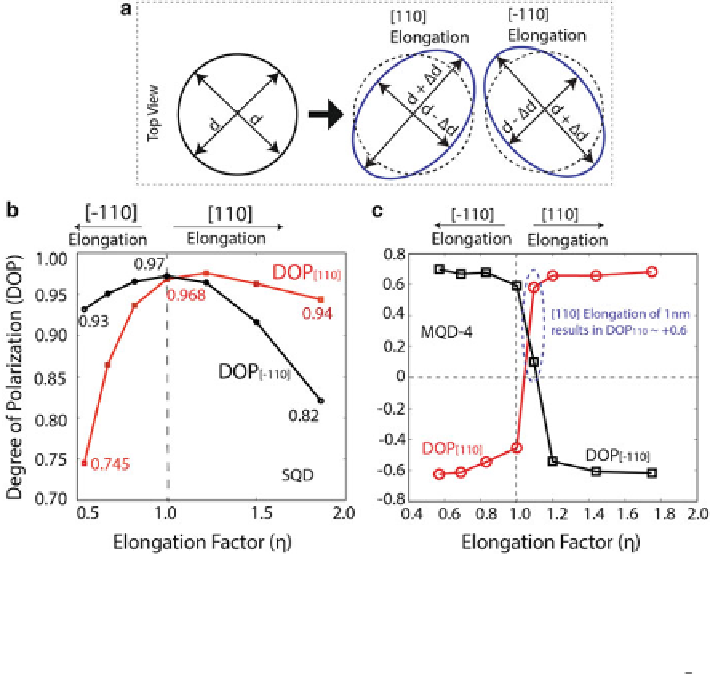Biomedical Engineering Reference
In-Depth Information
Fig. 5.8
(
a
) Schematic diagram of the top view is shown illustrating the base elongations for the
QD layers. The elliptical shape of the QD is formed by simultaneously decreasing (increasing)
the base diameter along the [110] direction and increasing (decreasing) the base diameter along
the [
is defined as ratio of the diameter along the [110]
direction and the diameter along the [110] direction. (
b
) The values of the DOP
[
110
]
−
110] direction. The elongation
f
actor
η
and DOP
[
110
]
are plotted as a function of the elongation factor
for the S
QD
. The elliptical shape of the
SQD reduces the values of the DOP along the both [110] and [110] directions. (
c
)Thevalues
of the DOP
[
110
]
η
and DOP
[
110
]
are plotted as a func
t
ion of
η
for the QDM-4. The large i
n
-plane
polarization anisotropy results in DOP
[
110
]
DOP
[
110
]
for
η
>
1.0, and DOP
[
110
]
DOP
[
110
]
for
η
<
1.0. A nearly step-like dependent of the DOP on the values of
η
is calculated
shapes and its potential strong impact on the polarization properties, the impact of
the base elongations on the value of the DOP
is only barely known. Recently, we
have provided, in Ref. [
10
], a detailed investigation of the impact of elliptical QD
shapes on the polarization properties of the single QD layers and vertically stacked
QDMs. In this subsection, we provide a brief overview of these results.
Figure
5.8
a shows the schematic diagram of the top view of a QD layer to
demonstrate th
e
simulated ellipsoidal shape of the QDs. We elongate the QD along
the [110] and [110] directions by equally increasing/decreasing the diameters along
these directions as illustrated in the figure. We
de
fine an elongation factor
[
n
]
η
as the
ratio of the QD diameters along the [110] and [110] directions. Therefore,
0
indicates an ellipsoidal QD with its major axis aligned along the [110] direction
η
>
1
.

